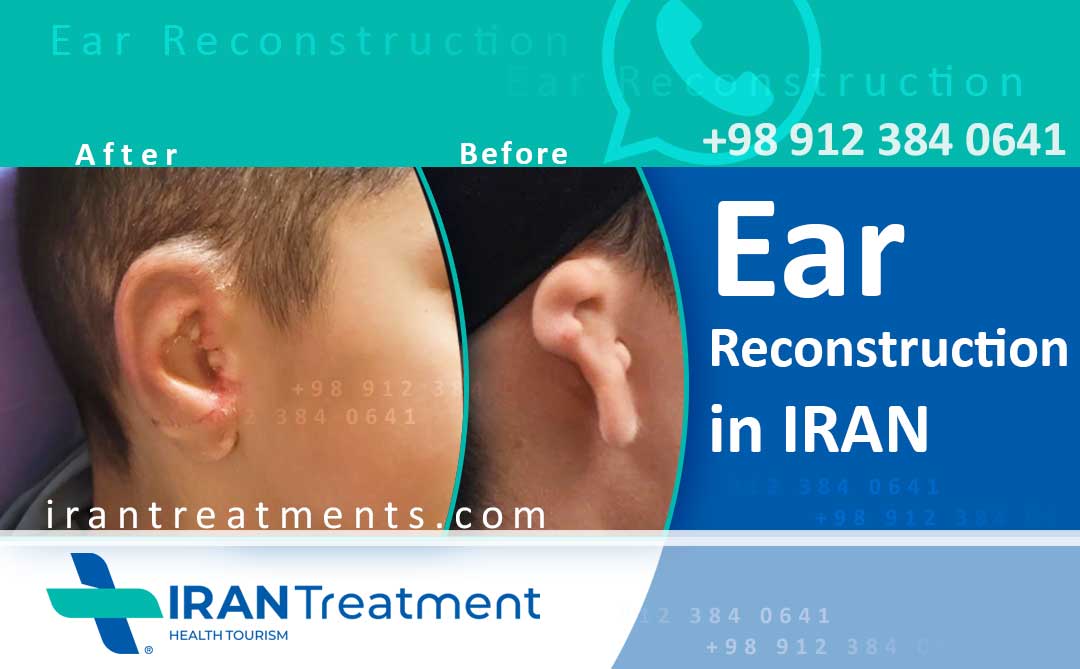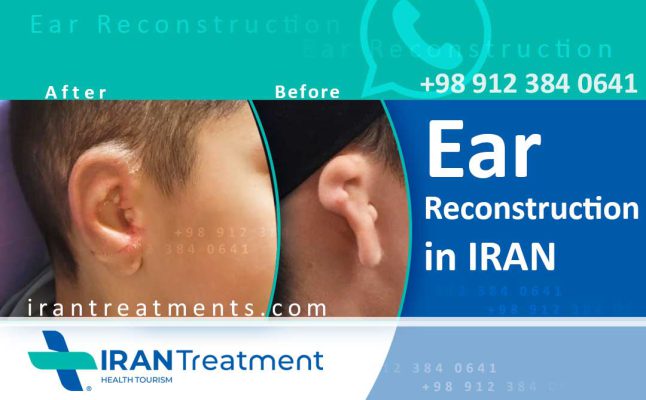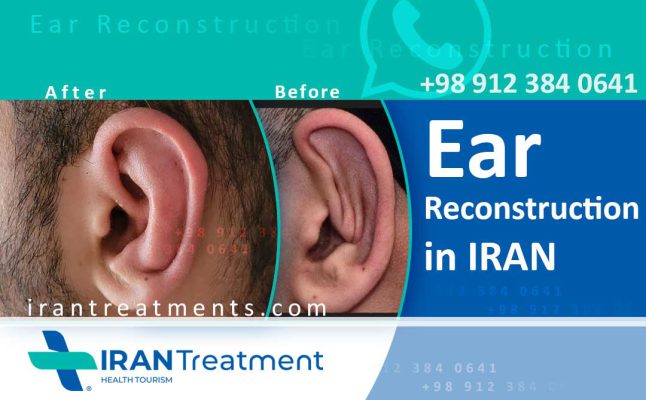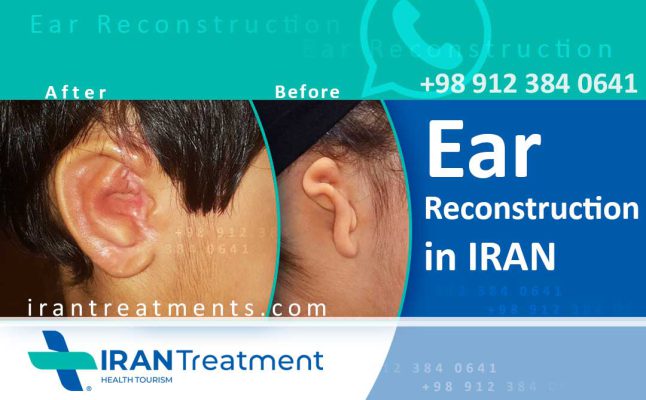Ear Reconstruction in Iran
Ear Reconstruction in Iran is a surgical procedure performed to restore the appearance and/or function of the external ear (auricle) due to congenital malformations, trauma, or cancer surgery. There are various techniques used in ear reconstruction, depending on the specific needs of the patient. Here is a brief overview of some of the most common approaches:
Ear reconstruction surgery is a form of surgery that can rebuild an ear damaged by trauma or cancer surgery, or misshapen or missing due to a congenital (present at birth) disorder. Along with surgery to rebuild or repair the ear, hearing rehabilitation with an otologist may be necessary.
1. Autologous rib cartilage grafts: This method is widely used in the reconstruction of the auricle, especially for cases involving microtia (a congenital deformity where the external ear is underdeveloped). In this procedure, the surgeon harvests rib cartilage from the patient, which is then carved and shaped into an ear framework. This framework is then inserted under the skin at the site of the Ear Reconstruction in Iran. Over time, the skin conforms to the shape of the cartilage, creating the appearance of a natural ear.
2. Prosthetic ears: In cases where autologous tissue is not available or not suitable, a prosthetic ear made of medical-grade silicone or other biocompatible materials can be used. These prostheses can be custom-made to match the patient’s other ear and skin tone and can be attached using adhesive, clips, or implanted magnets. Prosthetic ears may require regular maintenance and eventual replacement due to wear and tear.
3. Tissue expansion: In some cases, additional skin is needed to cover the reconstructed ear. Tissue expansion involves the insertion of a saline-filled balloon-like device under the skin. Over time, the saline is gradually increased, causing the skin to stretch and grow. Once sufficient skin has been generated, the tissue expander is removed, and the excess skin is used to cover the reconstructed ear.
4. Local flaps: In cases of partial ear defects, local flaps using the patient’s own skin and soft tissue can be used to reconstruct the missing part of the ear. This approach preserves the natural color and texture of the ear, making it suitable for smaller defects.
5. Reconstructive microsurgery: In some cases, such as after cancer surgery, a free tissue transfer (also known as a free flap) may be necessary to reconstruct the ear. This involves harvesting tissue, along with its blood vessels, from another part of the body and attaching it to the site of the ear reconstruction using microscopic surgical techniques to ensure proper blood supply.
Recovery from ear reconstruction surgery varies depending on the specific procedure and the patient’s overall health. Pain, swelling, and bruising are common after surgery, but these symptoms typically improve over time. The surgeon will provide detailed postoperative care instructions, including wound care, activity restrictions, and follow-up appointments to monitor the healing process.
It is important to note that ear reconstruction is a complex procedure that requires the expertise of a skilled plastic or reconstructive surgeon with specialized training in this area.
The cost of ear reconstruction surgery in Iran
The price of ear reconstruction surgery in Iran depends on the condition of the ear
To get the exact price of ear reconstruction in Iran, first send a photo of the ear to the WhatsApp 989123840641 number
If ear reconstruction is done using cartilage, it is usually done in two stages
For each stage, you need to stay in Iran for one week
Ear Reconstruction in Iran before and after
Ear Reconstruction in Iran for kids
Autologous ear reconstruction using rib cartilage
During the initial stage, cartilage is taken from the ribs and used to create a three-dimensional sculpture that looks like a normal ear. This is the technique used by most surgeons, and is typically performed when the patient is between 6 and 10 years of age.
What is the recovery after Ear Reconstruction in Iran?
Ear Reconstruction in Iran, also known as ear pinning or otoplasty, typically has a relatively quick recovery. Some key things to expect in the recovery process include:
• Bandages and dressings: The ears will be wrapped in bandages or dressings for the first few days after surgery. These help reduce swelling and protect the ears as they heal. They are usually removed after about 1 week.
• Swelling and bruising: There will be swelling and bruising around the ears for several weeks. The swelling can make the ears look very protruded or unnatural at first. But this will subside over time with the help of head bandages, medications, and icing.
• Pain and discomfort: There may be some pain, soreness, and discomfort for the first few days. The surgeon will prescribe pain medication to help manage any discomfort.
• No heavy exercise: Strenuous exercise and activity should be avoided for 3 to 4 weeks after surgery. Light activity can typically be resumed after 1 to 2 weeks, but no lifting, straining, or aerobic exercise during the initial recovery period.
• Final results: It can take several months for the swelling to completely go down and for the final results of ear pinning surgery to become apparent. But most of the swelling is gone within 4 to 6 weeks. The scars around the ears will continue to fade over the first year.
• Follow-up appointments: The surgeon will schedule follow-up appointments to check on the healing, remove stitches, and ensure the ears are recovering well. They can make any necessary adjustments or revisions at these visits if needed.
So all told, a full recovery from ear pinning surgery typically takes 2 to 3 months. But much of the swelling and visible signs of surgery will subside within the first month after the procedure. With patience and proper aftercare, the results of ear reconstruction can look very natural and help improve both appearance and confidence.
Ear reconstruction after cancer
Ear Reconstruction in Iran after cancer treatment can be more complex than cosmetic ear surgery. When a patient has had part or all of the ear removed due to cancer, rebuilding the ear requires special techniques and considerations. Some key things to know include:
• Tissue expansion may be needed. If much of the ear skin and cartilage has been removed, the surgeon may use tissue expansion to create extra skin before reconstruction. This involves placing inflatable balloons under the scalp to slowly stretch the skin over several months.
• Cartilage grafts are often required. Since the ear’s shape is formed by cartilage, transplanted cartilage pieces may be needed to recreate the curves and folds of the ear. Rib cartilage is commonly used, but cartilage from other body areas can also work well.
• Skin grafting may be necessary. If a large portion of ear skin was removed, skin grafts from other body areas like the scalp may need to





